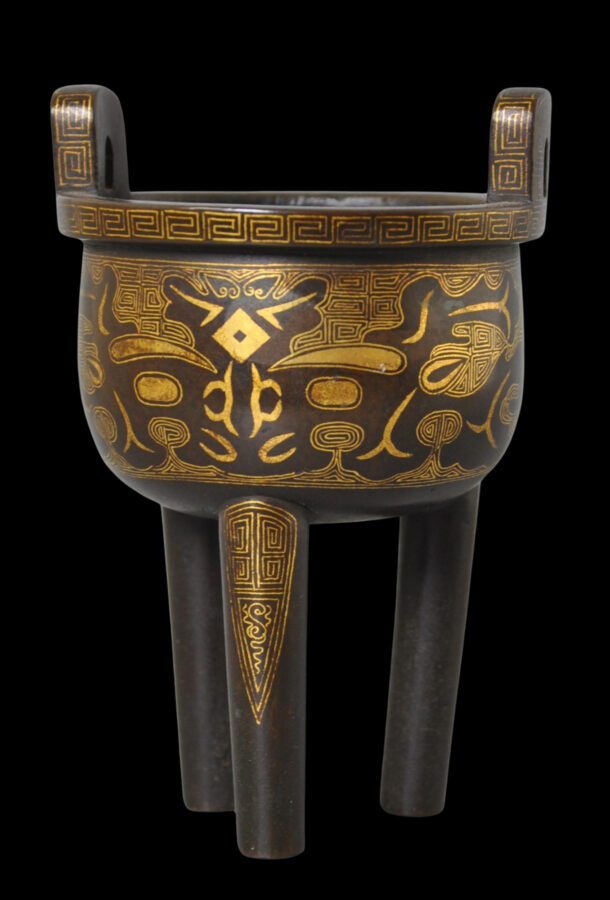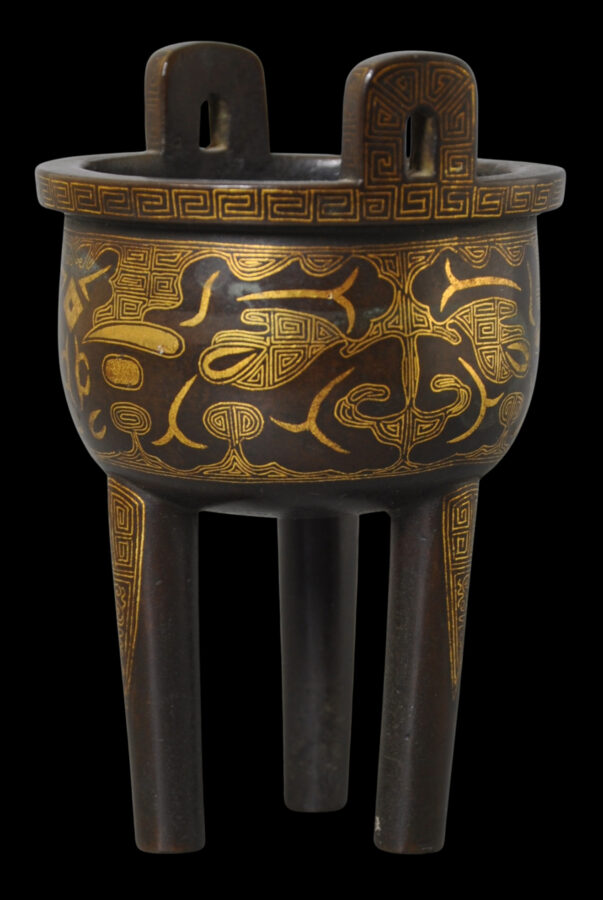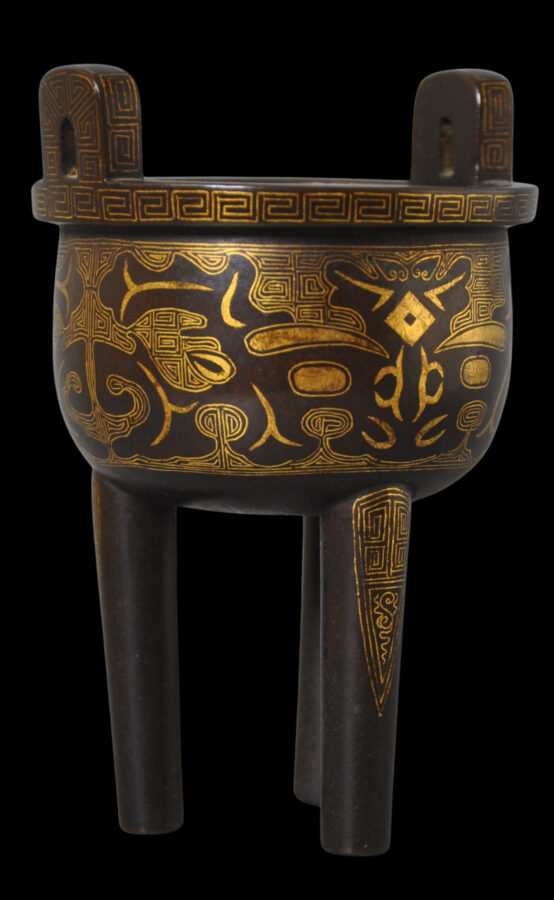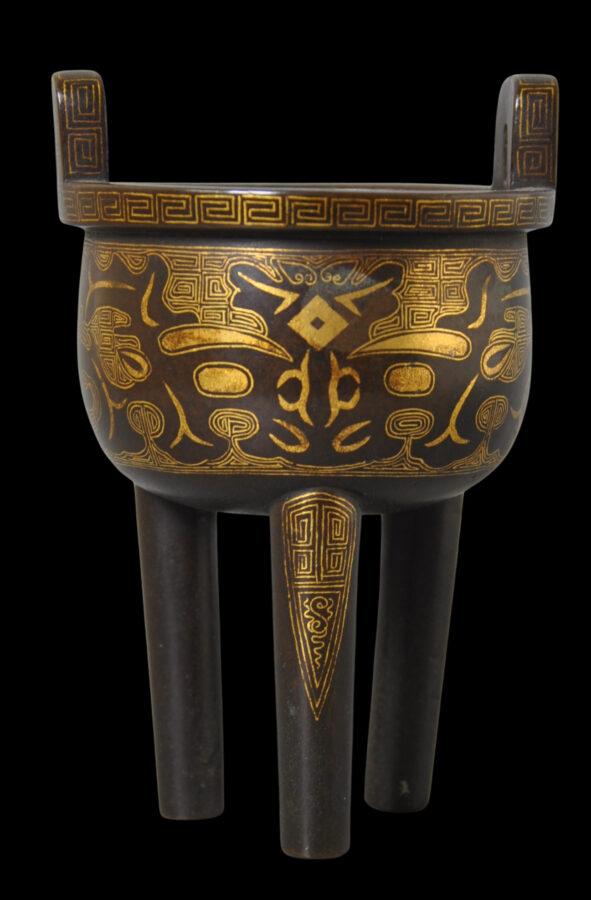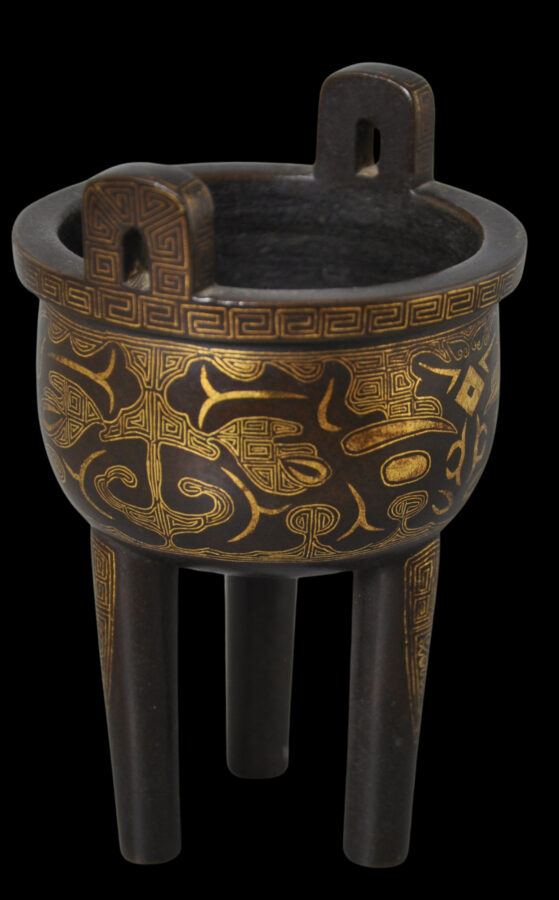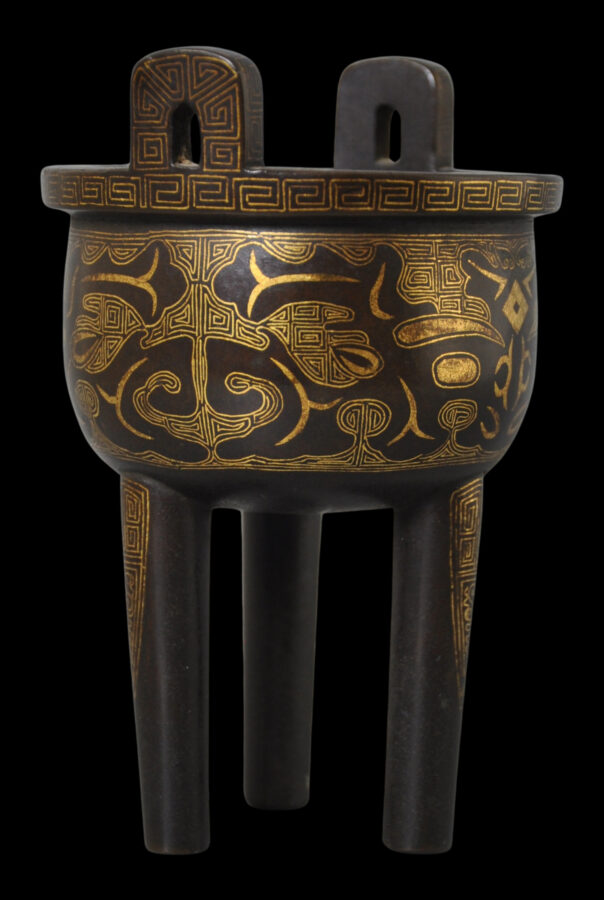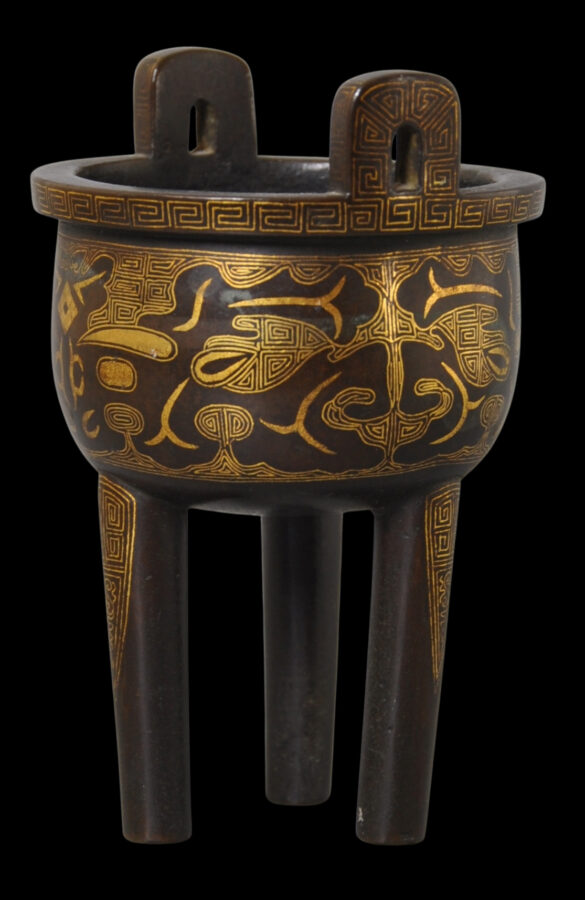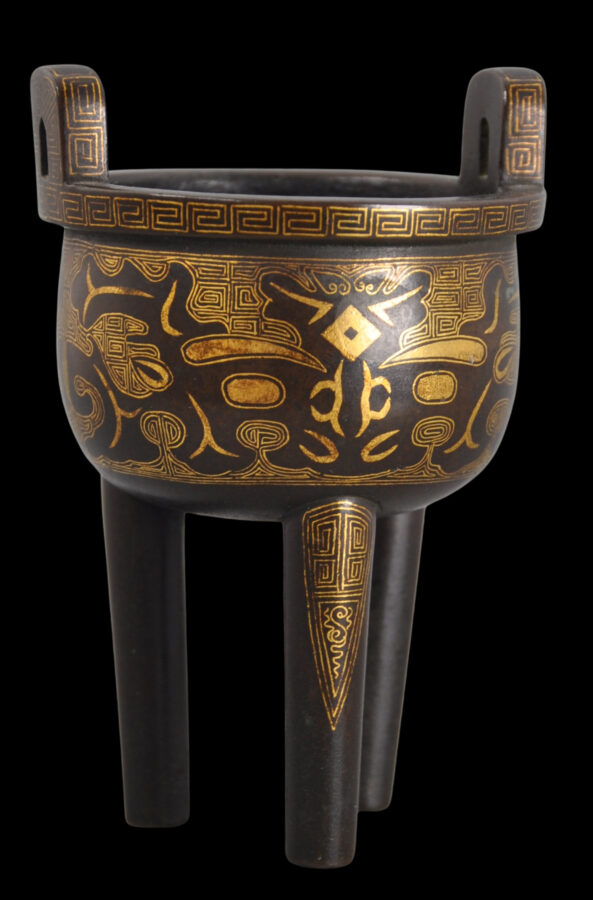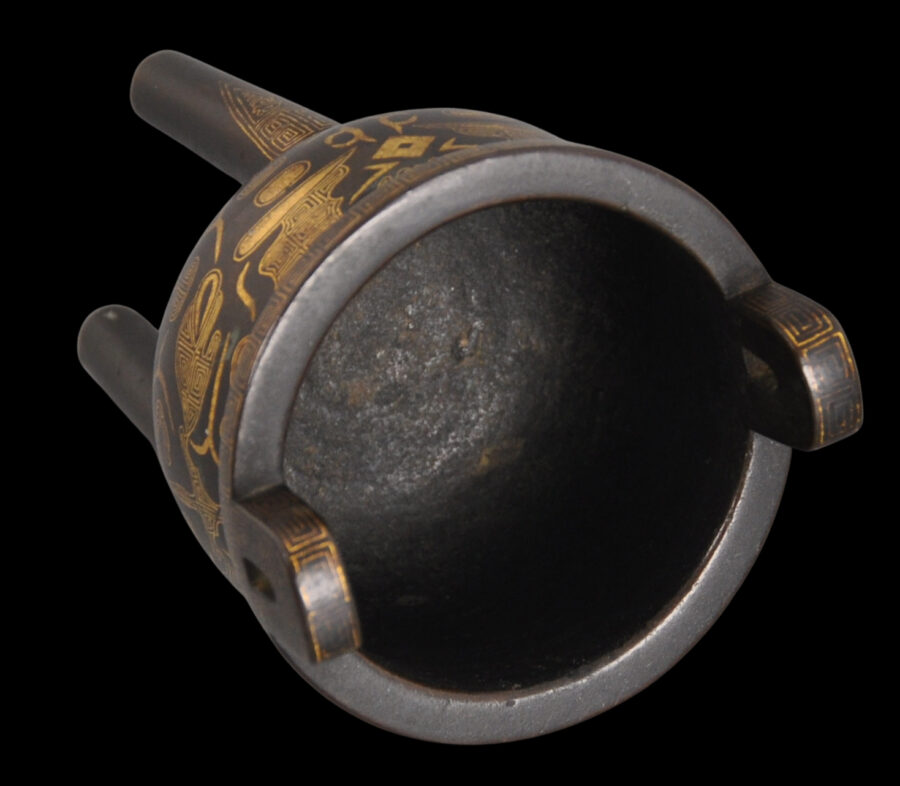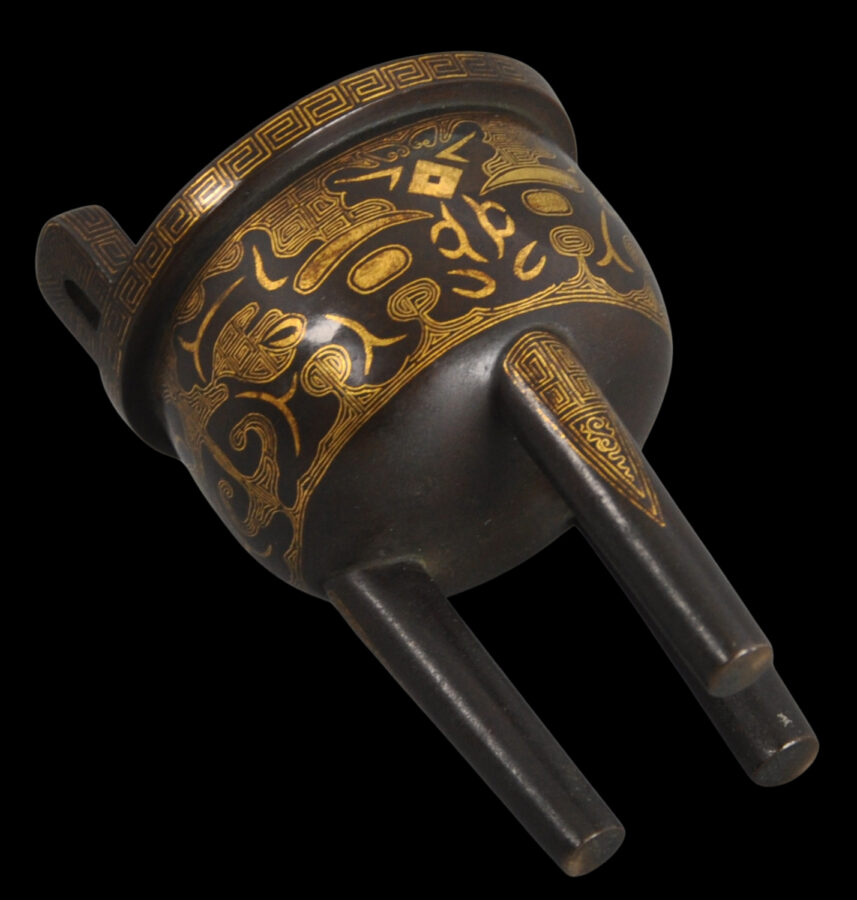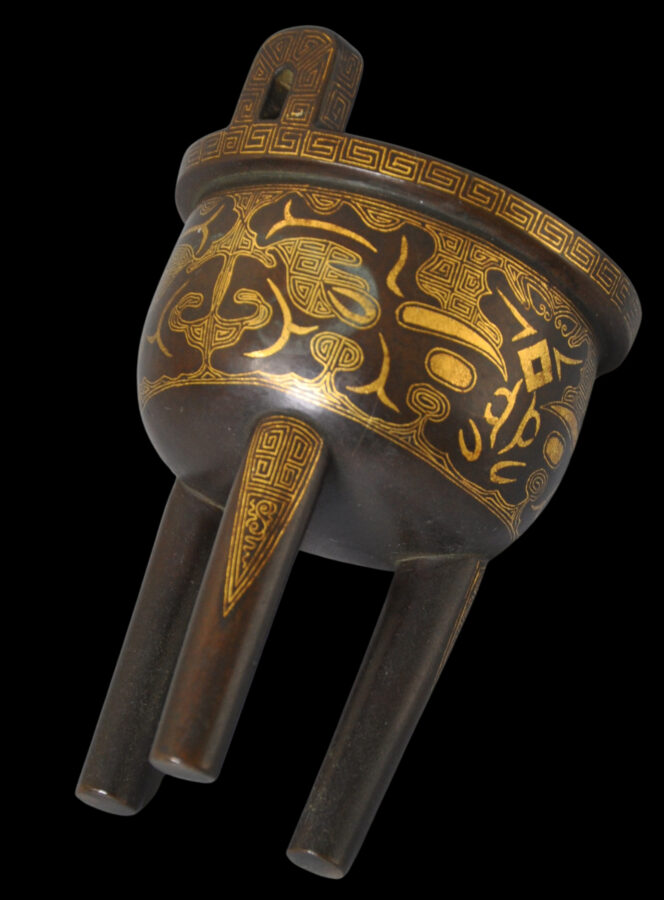Enquiry about object: 9544
Miniature Gold-Inlaid Bronze Tripod Ding Vessel
China circa 18th century
height: 9.9cm, width: 6.6cm, weight: 290g
Provenance
private collection, London, UK
This small, beautiful vessel, was made in China in around the 18th century. Cast in bronze, it has been finely inlaid with gold.
Of archaistic form – indeed, based on a ding – the vessel comprises a pit which stands on three feet.
The sides are decorated with taotie masks, below a key-fret border around the rim and on the upright handles, and above similarly decorated cicada blade motifs on each leg.
A ding was a large, ancient cooking vessel that possibly was also used for making offerings to the ancestors and deities. They were used from around the 13th century BC (Shang period) until the Han dynasty. All important matters were decided by offerings, rituals and on the battlefield, so the ding became a symbol of political power in ancient China.
Examples were unearthed and in the 18th and 19th centuries, miniature decorative copies were made, inspired by these ancient forms.
See a very similar example sold as lot 342 Sotheby’s New York, ‘Chinese Works of Art’, March 19, 2013.
The example here is in excellent condition.
References
Liu, Y. (ed.), Liaoning Museum, Chang Zheng Publishers, 2008.
Rawson, J. (ed.), The British Museum Book of Chinese Art, British Museum Press, 1992.


